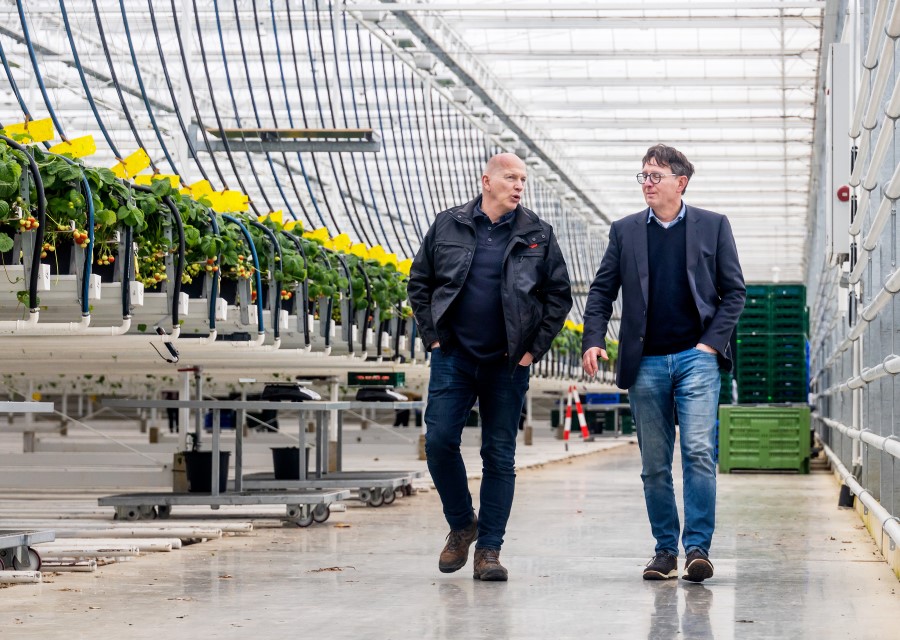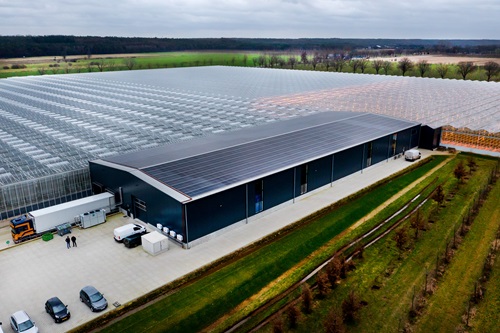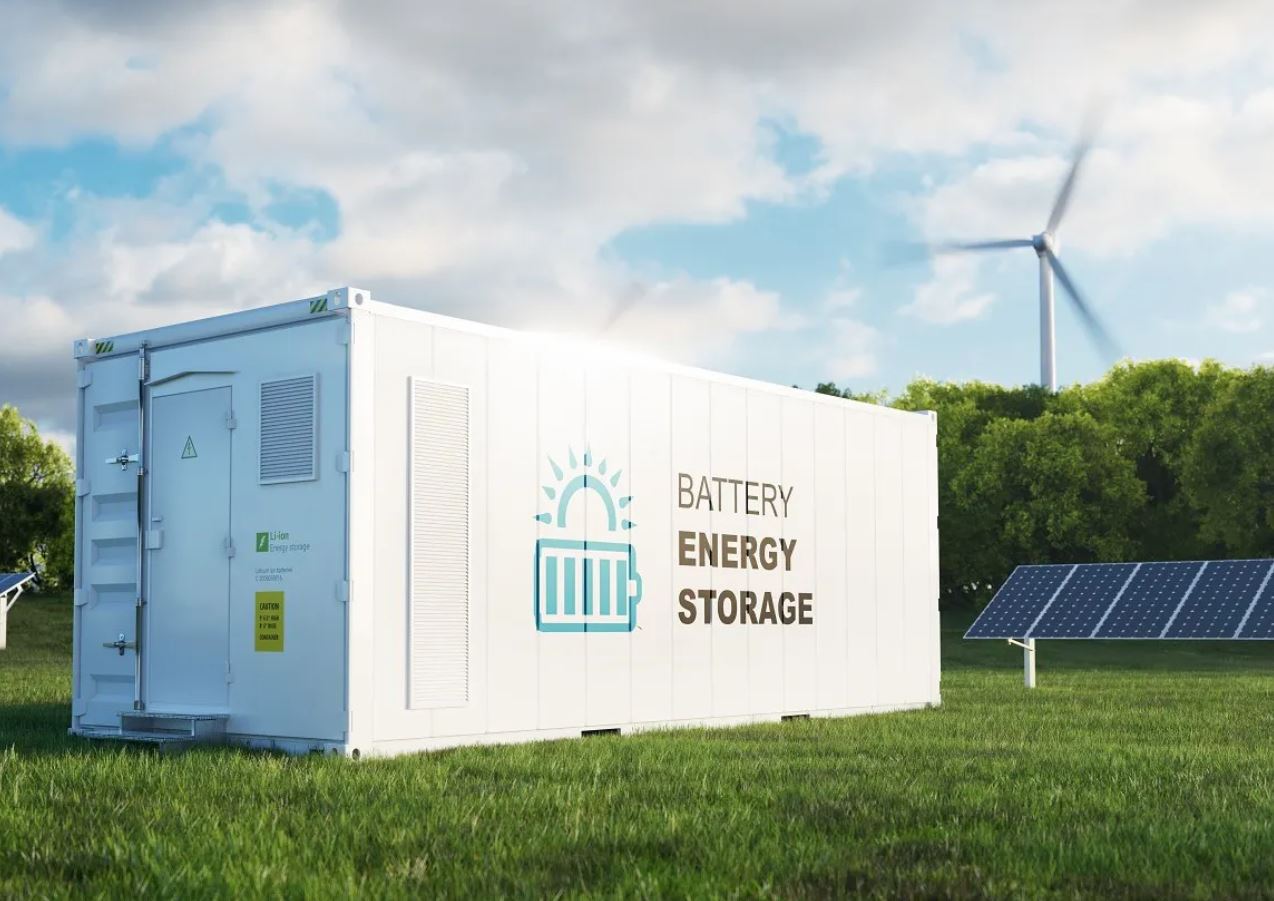"We can't wait until 2040 to transition away from gas"
Dutch Strawberry Grower Marcel Dings of Brookberries Urges Early Action on Gas Phaseout

Dutch greenhouse horticulture has the ambition to become climate neutral by 2040. Marcel himself has already taken many measures. He shared his experience and vision of the future with us.
With the rise in gas prices during the war between Russia and Ukraine came the scare: ‘The clock is ticking; we can't wait until 2040 to transition away from gas’. These are the words of Marcel Dings, strawberry grower in Venlo, the Netherlands. Once he started in his neighbor's greenhouse with 1 hectare of strawberries. Now his company has 5 locations and nearly 30 hectares of strawberries under glass. The Dutch greenhouse sector has the ambition to become climate neutral by 2040. Marcel and his business partner Peter van den Eertwegh are well on their way, although they also have setbacks. Is it realistic for greenhouse horticulture to lead the world in energy transition? Marcel asks himself the question and immediately gives the answer: "In the Netherlands we have a beautiful climate, a good infrastructure, a lot of knowledge and suppliers. All the know-how is here and has travelled the world. Then you don't give up this good starting position as a production country; of course, we as the Netherlands should be a leader!' The Dutch greenhouse horticulture sector has been making efforts to get rid of fossil natural gas for more than 10 to 15 years, the grower explains. 'With the huge increase in gas prices in August 2022, the shock did come. We can't wait until 2040 to transition away from gas! We must save as much as possible now to keep the product affordable for customers.' The subject never leaves the grower and many of his colleagues, he says. Even during the growers' association course on 'The New Cultivation' there were many questions and discussions. Can we make changes in cultivation so that you need less heat - thus less gas? Can we insulate the greenhouse and facades better? Or adjust the technology of the installations? More screens, different screens? Can we perhaps extract heat from the river Meuse, through aquathermy? Marcel already took many measures, yet not all innovations were successful. He talks about the 10 hectres of new construction in 2022. 'We invested in all possible techniques that fit 'The New Cultivation'. We insulated the facades to the maximum and took double screens. We filled the 1st greenhouse with LED lighting.' 1,000 solar panels were recently installed on the barn. Soon, he will expand this with 3,000 floating panels on the water basin. Marcel is forward-thinking and continues to look for new opportunities with his employees. 'In this 70-hectare area with multiple growers, geothermal energy at a depth of 2.5 kilometers combined with High Temperature Storage (HTO) in Aquifer could be an option. But: State Supervision of Mines (SODM) has halted all geothermal projects in the north of the province of Limburg due to increased risk of earthquakes. It now remains to be seen whether research shows that the seismological risks are acceptable. The possibility of shallow geothermal heat up to 1 kilometer deep was investigated, but the subsurface proved unsuitable for it. Although he is already further along in making his business more sustainable, Marcel says not all innovation succeeds. In 2007, he constructed an experimental 'air-conditioning greenhouse' to get started with conditioned strawberry cultivation. In fact, the start of 'The New Cultivation', energy-efficient cultivation while achieving optimal production, at Brookberries, and a knowledge project of the national strawberry committee of then LTO Growth Service. The innovation was successful in terms of improving the greenhouse climate by using fans and high-pressure misting. Unfortunately, mechanical cooling did not work out well. 'We learned a lot as a company,' Marcel said. “Let's look at sector and residential construction and work together.” The search for sustainable energy has been going on for some time. Greenhouse horticulture is looking at heat, electricity, and a substitute for gas. Marcel: 'If we want to produce out of season, we need alternative sources of heat. Electricity we still generate with the CHP and therefore with natural gas. Switching to sustainably generated energy such as windmills, solar panels or hydrogen is then a possibility.' Marcel calls for this to be done mainly together with other industries, and as greenhouse horticulture not to want to solve everything on its own. 'Look beyond your own sector and work with other parties. After all, industry and housing have the same challenges. The cooling water from a large gas-fired power plant here in the region ends up in the Meuse. Also, the ceramic and paper industries here are all still running on fossil fuel. Soon there will be factories running on hydrogen and companies blowing away heat. A local cooperation and exchange of this waste heat is obvious. So, the long-term solution is not just at your own company. What is happening in your working area? How can you use each other's heat or power production? And what are the possible area-specific solutions? If we can capture that smartly, that's where the longer-term challenges are. "How can you use each other's heat or power production? If we can capture that smartly, that's where the longer-term challenges are." - Dutch strawberry grower Marcel Dings on regional cooperation around sustainability Two years ago, hydrogen was barely on the radar, but growers joined forces. Geothermal heat and hydrogen initiatives have flourished, much to Marcel's pride. "Here in Southeast Netherlands, we face a unique challenge with geothermal heat. In the Westland region, the geological conditions are different, leading to notable success stories." Marcel reflects on a past setback, referencing the 2013 well construction in Limburg that raised concerns about potential subsurface vibrations. Despite uncertainty regarding its connection to geothermal extraction, the project was halted, much to Marcel's frustration. "It's particularly frustrating given the extensive 1,300 hectares of greenhouse cultivation in this area." However, this setback sparked a turning point for growers in the southeastern Netherlands. Two years ago, they banded together, recognizing the need for collective action. Regular meetings among these greenhouse owners serve as a platform for discussing energy strategies and engaging with policymakers and other stakeholders to chart a path forward. In the face of challenges, unity and proactive engagement have become the driving forces behind sustainable energy initiatives in the region. “We learn from innovation, yet sometimes things just don’t go as planned.” A year ago, Marcel and his associate built a new greenhouse. He uses his horticulture sense and learns every day. '100 percent LED lighting was not ideal for our cultivation. That's why we now opted for hybrid lighting: half SON-T and half LED. Most developments on the greenhouse were conceived by them, together with the staff. He also talks to fellow growers who also want to move forward, and to people who can make technical calculations. Marcel: "You do look for cooperation with suppliers who have experience and are at the forefront. Those companies often know that knowledge is increased by growers who think along with them. In this way both parties become wiser, and you keep improving and innovating. Invest and innovate. If something doesn't yield the expected results, don’t be afraid to make necessary adjustments and move forward.” “Make sure it doesn't cause significant damage if it goes wrong.” Contacts with key suppliers, the focus on reliability and operational reliability of innovations like e-boilers, LED lighting, batteries, solar panels, the waste heat. It's important but doesn't happen by itself, Marcel acknowledges. In doing so, he makes considered choices and goes for certainty. 'I like to work with companies that have already proven themselves. And if one does disappear, then another must be found quickly. For example, we opted for 2 large batches in potting soil instead of 1. If the CHP fails, the boiler is ready. If the power fails, an emergency generator is ready. The water pumps are duplicated; if 1 fails I can manage with the other.' When it comes to Marcel, you have to stay sharp. 'Make sure you can fall back on someone or something, that way you avoid downtime.' "Active participation is crucial, but it's important to maintain your sanity throughout the process.” When it comes to navigating the path towards sustainable energy, Marcel speaks with clarity. 'Those who wait for change to come to them won't succeed.' He firmly believes that growers must take the initiative in transitioning towards sustainable energy. Marcel urges them to remain curious and ask themselves key questions: What solutions are suitable for my company and its surroundings? What steps do I need to take, and who should I collaborate with? He emphasizes the importance of seeking collaboration and leveraging existing consultation frameworks in the region to avoid unnecessary duplication of effort. Marcel's final piece of advice: 'Sometimes, patience is key, and don't underestimate the value of good old-fashioned common sense!' Enhancing Safety and Innovation in Partnership with Hagelunie Greenhouse growers are constantly pushing boundaries, innovating, and seeking sustainable solutions for their businesses, particularly in the realm of energy investment. At Hagelunie, we understand the importance of supporting these endeavors by ensuring safety, managing risks effectively, and safeguarding business continuity. Our approach involves open dialogue with all stakeholders and sharing our extensive knowledge. Marcel Dings highlights the pivotal role of insurance companies in this process: 'Your insurance provider can be a valuable ally. By collaborating with insurers who possess insights gleaned from both local and international growers, along with practical case studies, you gain access to a wealth of expertise beyond just greenhouse horticulture.' Through collaboration, we foster a culture of collective intelligence and safety every step of the way. Should you have any inquiries, we encourage you to reach out to your broker, who can facilitate direct communication with Hagelunie's specialists. Together, we build a smarter and safer future. Contact us today to learn more. About Brookberries Together with his business partner Peter van den Eertwegh, Marcel owns Brookberries in the Netherlands. The company specializes in growing strawberries under glass. In 1999 an existing 1 hectare glass farm was bought for this purpose. The growers now have nearly 30 acres, and a production of 3.5 million pounds of strawberries. The varieties they produce are Elsanta, Opera, Sonata, Sonsation, Fandango and Favori. In addition to strawberries, the company along with 7 other greenhouse companies also started a new crop: passion fruit in the greenhouse. Marcel Dings is active in several boards. He is also a member of our Covered Crops Sector Council.

